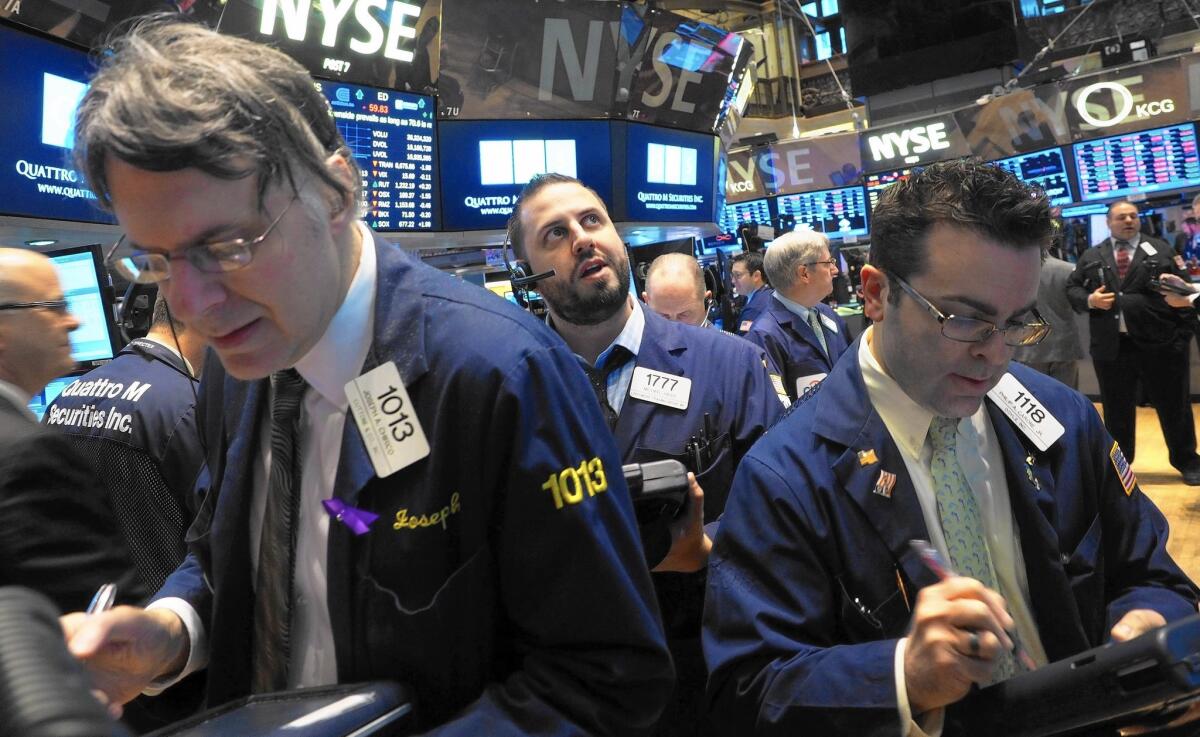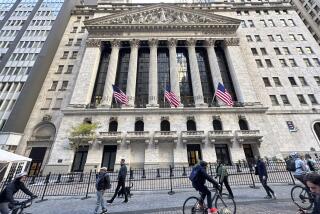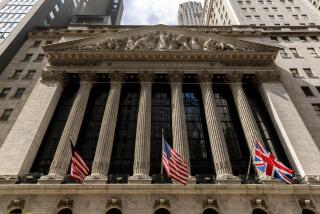Wall Street keeping a close eye on wages

The stock market moved sideways and down this week as investors sorted through a welter of conflicting data about the strength of the U.S. economic recovery: consumer spending up, inventories down, dollar stronger, output forecasts lowered.
But, analysts said, the one place investors might check most carefully is closer to home: their own pocketbooks.
The stubbornly microscopic upticks in wages in the face of strong job growth is becoming an increasing focus of attention of Wall Street analysts, who are parsing government data for signs that the six-year recovery that has flowed to shareholders and executives has trickled down to the shop room floor.
A big reason Wall Street is watching wages so closely is that it believes the Federal Reserve’s rate-setting board is watching them, too, as an important metric in deciding when to start raising short-term interest rates that have been rock bottom since December 2008.
“It’s on the short list of things that the Federal Reserve is looking at,” said Mark Zandi, chief economist at Moody’s Analytics. “It may be at the top of the list.”
In a speech Friday in San Francisco, Fed Chairwoman Janet L. Yellen re-emphasized that the central bank looks at a wide range of data in formulating monetary policy, noting that a pickup in neither wages nor inflation is “indispensable” for her in making a decision on when to raise interest rates.
“That said, I would be uncomfortable raising the federal funds rate if readings on wage growth, core consumer prices and other indicators of underlying inflation pressures were to weaken,” she said.
But she and other policymakers have maintained, as she put it recently: “We will be looking at wage growth.”
In the upside-down world of Wall Street, higher wages is not necessarily good news, certainly for markets.
“The worry is that [sharp wage growth] would accelerate the overall growth of inflation. And that’s not a good thing,” said Sam Stovall, U.S. equity strategist for S&P Analytics.
On the other hand, it’s hard to imagine a sustained recovery without broad-based wage growth. That would have the positive effect of driving up consumer spending, which makes up about 70% of the nation’s total economic output, and propelling the economy generally.
For now, markets are muddling through a haze of mixed economic news that includes wages that remain puzzlingly static. After four straight days of losses, the Dow Jones industrial average and the broader Standard & Poor’s 500 index showed modest gains on Friday, with each up 0.2%.
Still, both indexes were off more than 2% on the week. For the year so far, the S&P is barely in positive territory, up just 0.1%, and the blue chips are down 0.62%.
If wage increases are a problem for markets, so far there hasn’t been much to worry about. Over the last five years, average hourly earnings have risen only 2% overall, and only 1.6% among production and non-supervisory workers, and a Wall Street consensus projects only modest improvement this year.
That’s a conundrum, given that the labor market overall is heating up, Russ Koesterich of investment giant Blackrock Inc. said Friday. The economy created more than 250,000 jobs a month last year, an acceleration in job growth that pushed the unemployment rate to 5.5%, the lowest since the spring of 2008 and close to what many economists would call full employment.
“Wages are not responding as expected,” Koesterich wrote in a note to investors.
Among the causes, analysts said, is the rise of part-time employment, which dampens wages. More deeply rooted causes include the off-shoring of high-paying manufacturing jobs, the decline of union membership and the rise of technology replacing workers.
Wage stagnation is an old story, of course, having been around for about 35 years, according to the Economic Policy Institute, a left-leaning Washington think tank.
It reported last year that hourly wages of the vast majority of Americans have either stagnated or declined since 1979 — the late 1990s being a brief exception — even as the economy surged.
Median hourly wages rose just 0.2% annually between 1979 and 2013, while productivity grew eight times faster than average hourly compensation, the report said.
Besides ameliorating social ills such as wealth inequality and a lack of economic mobility, broad-based wage growth can “boost macroeconomic growth and stability in the medium run by closing the chronic shortfall in aggregate demand,” the report said.
But the long-term economic problem has short-term implications for the markets.
Since wages account for about 70% of inflation, continued stagnation will probably hold down interest rates, despite an expected rate hike later this year, and would tend to support a continued dovish policy by the central bank, analysts said.
“If these conditions hold, interest rates would likely remain at low levels for a long time,” Koesterich wrote.
Stock investors have “feasted” on the combination of low wages, strong profits and low interest rates, Zandi said, but those fat times may be coming to an end.
Bob Johnson, director of economic analysis for research firm Morningstar Inc., argued that improving conditions and a shrinking labor pool caused partly by retirements are already creating shortages in some markets.
Broader-based shortages are likely over the next several years, leading to higher wage rates, higher consumer spending and inflation, and slower profit growth, he said.
“We may be moving into an era where the scarcest corporate resource is labor and not capital,” he wrote.
But others said the economy has plenty of room. Zandi said that even wage growth before inflation of 3.5% would not fuel inflation above the Fed’s 2% target, given that productivity growth is usually around 1.5%.
The opposite danger for the Fed, analysts said, would be to shut down a wage increase before it really happens.







